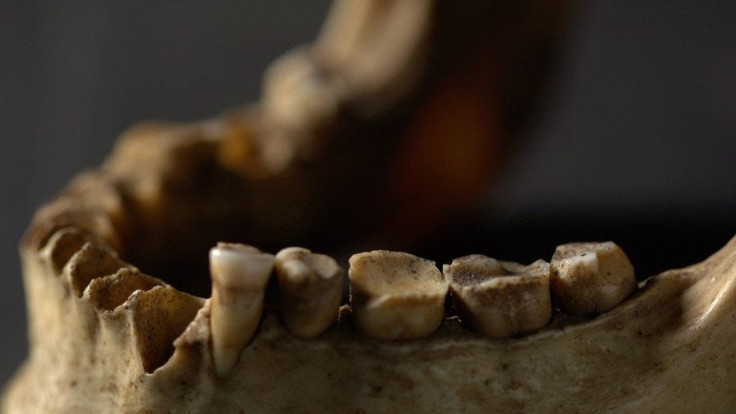Archaeologists Use Skeleton Method To Find Ancient Human Lifespan

Ancient men and women may have lived almost twice as long as many modern people believe.
Archaeologists have come up with a new way of analyzing a skeleton’s teeth to estimate the lifespans of people who are long dead, according to a study in the Journal of Anthropological Archaeology. Although there is a long-held myth that our ancestors typically died when they were what now would be considered middle-aged, tooth analysis suggests they lived roughly until age 70.
The new method bases age estimates on the wear and tear of centuries-old choppers. It comes from looking at how teeth get worn down over time in existing societies where people live lives similar to how an archeological subject lived all those years ago.
For the current study, the teeth of English skeletons from between about 1,400 and 1,550 years ago were examined. They suggest that people in their society lived for longer than many would think.
“People sometimes think that in those days if you lived to 40 that was about as good as it got,” archaeologist Christine Cave said in a statement from Australian National University. “But that’s not true. For people living traditional lives without modern medicine or markets the most common age of death is about 70, and that is remarkably similar across all different cultures.”
It’s typically easier to determine a child’s age than an adult’s because a young person’s bones hit specific developmental milestones at certain times in their lives. Once the skeleton is fully developed, the lines between ages become blurred.
The new analysis also showed that women tended to live longer than men in that Anglo-Saxon civilization — a pattern similar to what you would find today.
Being better able to determine the age at which someone died based upon their skeleton means scientists and historians can learn more about how ancient societies treated the elderly.
In the case of the cemeteries where the remains for this study were dug up, “women were more likely to be given prominent burials if they died young, but were much less likely to be given one if they were old,” Cave said. “The higher status men are generally buried with weapons, like a spear and a shield or occasionally a sword. Women were buried with jewellery, like brooches, beads and pins. This highlights their beauty which helps explain why most of the high-status burials for women were for those who were quite young.”
© Copyright IBTimes 2024. All rights reserved.




















